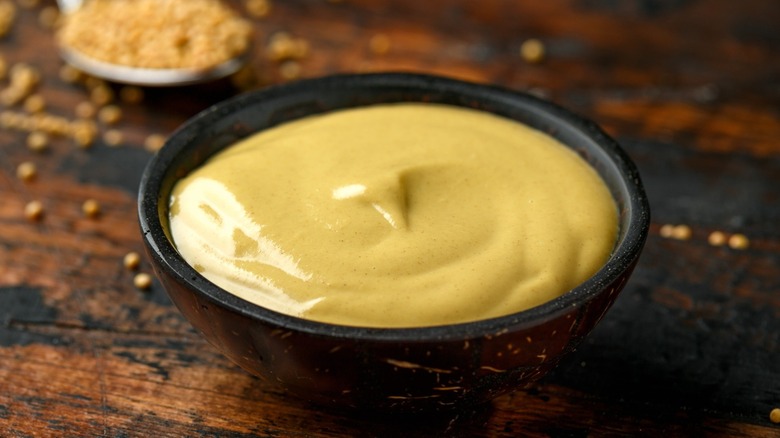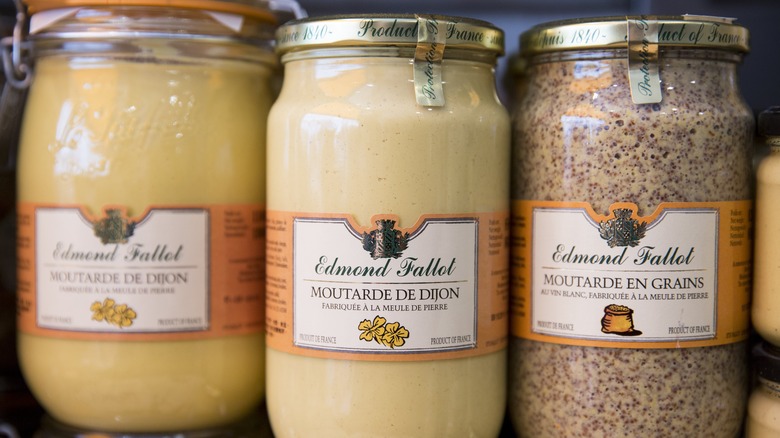The Difference Between Brown And Dijon Mustard
If you're a mustard fan, you know that there are multiple types of mustard out there. From spicy to sweet, which is the best type of mustard is certainly up for debate, and it's a topic many people have strong opinions about. But while some of us proudly advocate for our favorite mustard, others aren't exactly sure what makes one mustard different from another. Knowing a bit more about them can help you choose one for every purpose and occasion.
Most of us likely picture yellow mustard when we think of mustard. Yet, there are other, more flavorful picks that have just as many fans. Brown mustard and Dijon mustard are two popular varieties that are actually very different. But there are plenty of people who aren't exactly sure what sets these two apart from each other. One difference between yellow mustard and Dijon mustard is easy to see: they have different looks and colors. Brown and Dijon mustard, on the other hand, are a bit closer. All mustards, of course, have mustard seeds in common. How they're prepared gives these mustards differences in taste and consistency.
The difference has to do with preparation
Brown and Dijon mustard are both great options if you love condiments with a little bit of spice. There are, however, a few things that set them apart. For starters, Dijon mustard combines grapes with mustard seeds, while brown mustard swaps out the grapes for vinegar. For obvious reasons, the differences in these ingredients make brown mustard tangier, spicier, and more flavorful. And, while both of these mustards are darker than yellow mustard, brown mustard is darker than Dijon.
There's one more obvious way of telling brown and Dijon mustard apart: the two condiments have different consistencies. Brown mustard contains partially whole grains, which makes it coarser, and gives it a similar feel to whole-grain mustard. Dijon mustard, on the other hand, is smooth and creamy like yellow mustard. Because of the big difference in the two mustards' coarseness, they each work better on different types of foods. Brown mustard is great for spreading and dipping — use it for pretzels, crackers, or as a sandwich spread to highlight its complex flavor and unique texture. Because Dijon is smooth and a bit milder, it's the ideal choice for meat marinades, sauces for fish or French fries, or even as a base for salad dressing.

